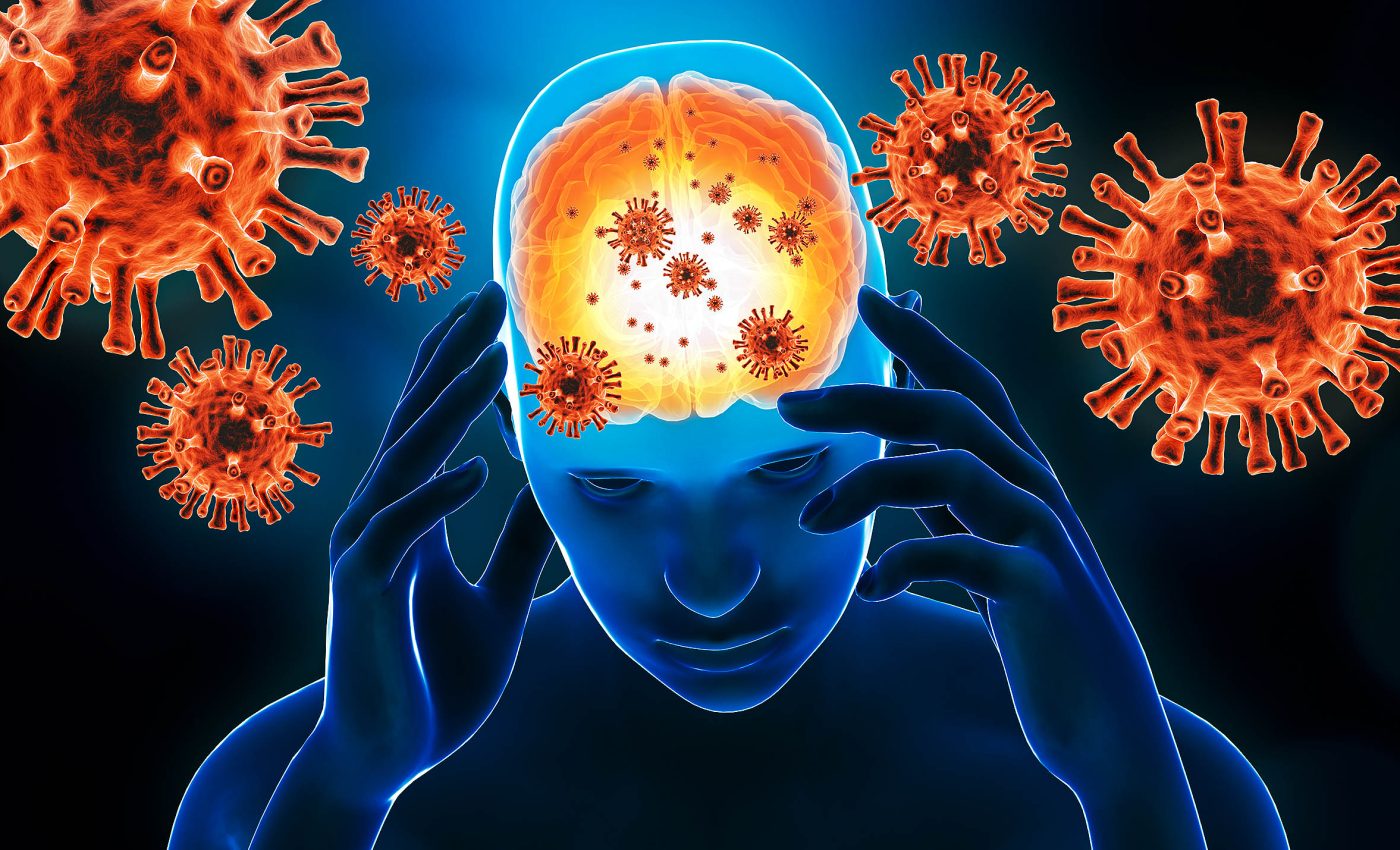
Connection found between 'cold sore' herpes virus and Alzheimer’s disease risk
Alzheimer’s disease often gets blamed on two proteins – amyloid and tau. Amyloid shows up as sticky clumps outside nerve cells. Tau shows up as twisted tangles inside them.
Many people treat phosphorylated tau, or p‑tau, as a one‑way ticket to damage. That picture leaves out an important twist.
Linking HSV-1 with Alzheimer’s
Researchers at the University of Pittsburgh (Pitt) have discovered an unexpected connection between Alzheimer’s disease, tau proteins, and the herpes simplex virus-1 (HSV-1) that is responsible for cold sores.
The study points to a role for viral stress and to a surprising shift in how we think about tau during the early stages of trouble.
“Our study challenges the conventional view of tau as solely harmful, showing that it may initially act as part of the brain’s immune defense,” said senior author Or Shemesh, Ph.D., assistant professor in the Department of Ophthalmology at Pitt.
“These findings emphasize the complex interplay between infections, immune responses and neurodegeneration, offering a fresh perspective and potential new targets for therapeutic development.”
Cellular roads in the brain
The brain has “roads” made of nerve cells (neurons). Those cellular roads carry signals that let us learn, remember, and stay oriented.
When viruses stir inside the nervous system, those roads face extra strain. Viruses like HSV‑1 can hide quietly in cells and then reactivate later.
This new line of research from Pitt asks whether p‑tau sometimes acts as a first responder when HSV‑1 reactivates, rather than serving only as a marker of decline.
The team asked two linked questions:
Do traces of HSV‑1 appear in the brains of people with Alzheimer’s? If so, how do those traces relate to tau, amyloid‑beta, and core features of the disease across brain regions such as the hippocampus, entorhinal cortex, and cerebellum?
Searching for viral traces
They used methods that detect viral clues from different angles. Metagenomic DNA sequencing scanned tissue for tiny bits of viral genetic material.
Mass spectrometry looked for protein “fingerprints” the virus might leave behind and flagged specific viral proteins for follow‑up with classic lab assays to confirm their identity.
To pinpoint where those signals sit inside cells, the team used expansion pathology. This procedure makes preserved brain tissue swell to about four‑and‑a‑half times its original size.
When the sample expands evenly, crowded molecules spread apart. Antibodies – often used as molecular “highlighters” – can then slip in more easily and tag targets with less background glow.
The payoff is a sharper nanoscale view of how viral proteins relate to tau and amyloid in the same slice.
HSV-1 signals in Alzheimer’s patients
Multiple methods converged on the same finding: HSV‑1 proteins were present in Alzheimer’s brains, and the signal tended to rise with disease severity.
One protein, ICP27, stood out. It is an “immediate‑early” protein that the virus makes as soon as it reactivates inside a cell, so it marks active viral processes, not a distant memory of infection.
ICP27 did not show up everywhere. Early in the disease, its signal appeared more often in neurons within regions hit hard by Alzheimer’s.
Later, it shifted toward microglia – the brain’s resident immune cells – suggesting that as damage mounts, microglia interact more with viral components or react more strongly to them.
When the researchers compared maps, ICP27’s hotspots overlapped tightly with areas rich in phosphorylated tau.
That pattern did not extend to amyloid‑beta plaques or soluble amyloid oligomers. The virus‑related protein and amyloid pathology rarely overlapped.
“Mini-brains” in the lab
To probe cause and effect, the team used human brain organoids and rodent neuron cultures. Organoids are simplified “mini‑brains” grown from stem cells that mimic key cellular relationships. When the team infected these models with HSV‑1, tau phosphorylation increased.
Antiviral treatment, which pushed the virus into a lower‑activity state, reduced tau phosphorylation. Reactivating the virus raised tau phosphorylation again.
Then they flipped the question to test the other direction: “What does the virus do to tau?” versus “What does tau do to the virus?”
When they experimentally increased phosphorylated tau, ICP27 levels dropped and neurons survived infection at much higher rates.
In cultures lacking this boost in p‑tau, roughly two‑thirds of neurons died after infection. With elevated phosphorylated tau, only a small fraction died.
When protection turns harmful
These findings help connect two pictures that often seem at odds. Early and controlled phosphorylation of tau may actually help neurons survive when HSV‑1 strikes.
If that response is triggered too often or lasts too long, the same modification can misfold, clump, and form tangles. Those tangles disrupt transport inside neurons, jam signaling, and set the stage for degeneration.
The study does not argue that p‑tau is “good” overall. It shows that context and timing matter. A protective surge that helps cells withstand infection can cross a threshold into chronic, self‑reinforcing harm when control slips.
HSV-1, Alzheimer’s, and future study
Infection, aging, and genetics likely interact in complex ways in Alzheimer’s. This work strengthens the view that viral infections, like HSV-1, can intersect with Alzheimer’s disease without serving as a single simple cause. It also suggests practical directions for therapy development.
Overall, the findings point to a model in which p-tau offers short-term protection but becomes harmful when this response stays switched on, opening new paths for therapies that calm viral activity or fine-tune these cellular alarm signals.
Although the exact ways HSV-1 affects tau protein and contributes to Alzheimer’s disease remain unclear, Shemesh and his team intend to investigate these mechanisms in upcoming studies.
The full study was published in the journal Cell Reports.
—–
Like what you read? Subscribe to our newsletter for engaging articles, exclusive content, and the latest updates.
Check us out on EarthSnap, a free app brought to you by Eric Ralls and Earth.com.
—–













